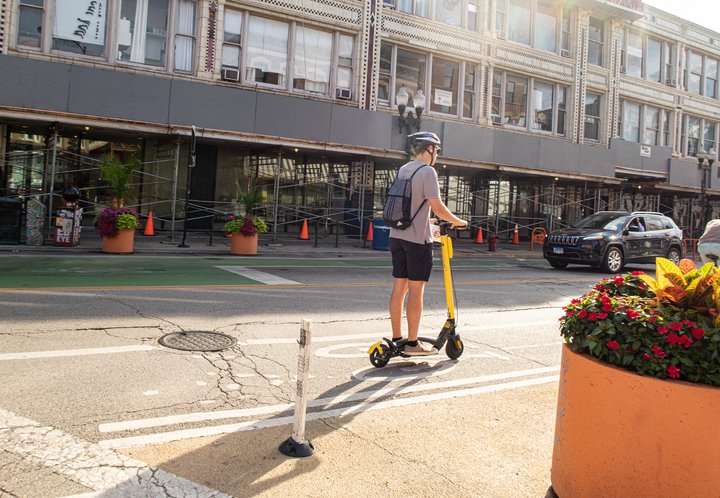UPDATE (1/29/20): The City of Chicago released an evaluation of the 2019 scooter pilot and announced there will be a second pilot during summer 2020. They’re currently working on the terms of the new program. No details about how it will be structured are available at this time.
________________
During the past four months while the City of Chicago’s e-scooter sharing pilot program has been underway, Active Trans has been busy gathering information — online and in-person — from hundreds of Active Trans members, supporters, and residents. Many of the people who provided feedback live or work in the West Side pilot area.
We wanted to hear what people thought about the pilot program and their general thoughts about e-scooters.
As the pilot program wraps up this week, Active Trans is sharing a set of policy recommendations based on the collected feedback as well as input from other cities and transportation professionals.
Overall, we found that the pilot program shows shared electric scooters can help get people out of cars and increase transportation access on the West and South Sides.
POSITION ON E-SCOOTERS
Active Trans supports the City of Chicago in developing a long-term e-scooter sharing program. We also support suburban communities exploring pilot programs where feasible.
When compared to driving or riding alone in a car, e-scooters are a far better choice because of the health, safety, sustainability, and equity benefits they can provide.
E-scooters are a welcome first-mile, last-mile connection to train and bus stops. This fun transportation option should be most available in communities with limited access to public transit.
But when it comes to the question of how e-scooter sharing compares to walking, bicycling, and public transit, e-scooters clearly lag behind in terms of the health, safety, sustainability, and equity benefits. That’s why walking, biking, and transit use should be given priority relative to e-scooters when it comes to street space, parking, and public investment.
POLICY RECOMMENDATIONS
Here are just a few of our policy recommendations about e-scooter sharing in Chicago (see the full set of recommendations).
- Require e-scooters to be parked in docks, painted corrals, or locked to public racks and posts. Asking riders to walk a bit farther to or from a designated parking area is worth decreasing the likelihood they’ll be left in the public way.
- Keep scooters out of downtown. Chicago’s Central Business District should be a priority space for people walking, biking, and riding public transit. The city’s focus should be on reallocating street space from cars and making these modes safer and more convenient downtown — not introducing scooters to the mix. The e-scooter zone should be expanded to include the South and North Sides.
- Retain and expand priority zones in low-income, low-opportunity areas. The city’s priority zones of less dense, lower-income neighborhoods on the West Side should remain in place. New priority zones should be established on the South Side. The requirement for at least 50 percent of scooters to be in one of the priority zones at the start of the day should remain.
The report also includes recommendations for how the city could reap the community benefits of a long-term e-scooters program and establish an equitable cost structure.
As the city concludes its e-scooter pilot, it’s looking for feedback on the program. Share your thoughts about e-scooters in the City of Chicago’s survey.

